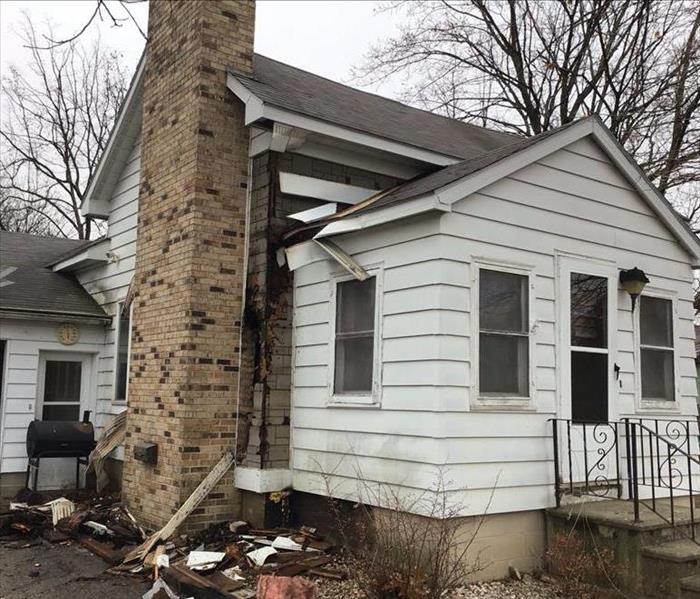Chimneys are pretty… dangerous.
12/23/2020 (Permalink)
*sings
Chim chiminey
Chim chiminey
Chim chim cher-ee! A sweep is as NEEDED
As NEEDED can be
The look of a chimney and the sound of crackling wood is indeed pretty to look and listen to but did you know that without proper maintenance and cleaning, chimneys can be hazardous. As a restoration business that cleans up after fire damage, we have already had a few fire losses due to chimneys. With colder temperatures, we assume most of you have started up your fireplace and hopefully, nothing has happened but it’s not too late for some education!
6 Tips to maintain the health of your chimney
- Have a professional do a chimney inspection annually – the best time is off-season (before fall and winter).
- Observe your chimney draft. The chimney should draw the fire up rather than push back inside your home. You can test this by lighting a rolled-up newspaper or small pieces of wood inside the chimney. If you see that it doesn’t smoke properly and fills the room, quickly distinguish the flame. There could be an obstruction in your chimney that needs to be cleared away. Be sure to always open the damper before lighting your chimney.
- Do not use unseasoned wood in your fireplace. Unseasoned wood or “green wood” is wood that is still wet. Unseasoned wood will smoke harshly and can create more soot and creosote. Creosote is a residue of wood burning in the chimney but too much can be extremely flammable. According to the Chimney Safety Institute of America (CSIA), “All forms are highly combustible. If it builds up in sufficient quantities – and the internal flue temperature is high enough – the result could be a chimney fire.”
- If you have a brick or masonry chimney, inspect the interior of the firebox and exterior of it for any holes, loose debris, or cracking in the mortar. Fire can escape from these cracks and spread to the rest of your home. Also, check for creosote or soot build-up. If the creosote is tar-like, do not light a fire. You must get the chimney cleaned out.
- If you are a new owner to a chimney, understanding the mechanics and build of your chimney will help you prevent a fire. Before you purchase, make sure you ask a lot of questions about the proper way to maintain the chimney and even how old it is and when was the last time it was repaired or had a maintenance check. The diynetwork.com has a great article with easily consumable information about the Fireplace and Chimney Elements.
- With a glove, check the smoke shelf for any debris, leaves, or water that could have fallen through the chimney cap. It is important to have a cap on the top of your chimney to prevent large objects or animals to come in through your chimney. Sorry Santa, you might need to come in through the front door.
Enjoy your clean and safe fireplace!
We do not sweep chimneys but we do clean soot and fire damage. Remember, you should schedule an annual inspection preferable performed by a CSIA Certified Chimney Sweep in 2021. If you experience some fire damage and need your fireplace restored, give us a call. We are here to help.





 24/7 Emergency Service
24/7 Emergency Service
